History is an open witness to numerous successful military
commanders from the time of first commander and empire builder Sargon the Great
of Akkad until now, in which some plays a decisive role in the early formation
of new massive empires such as Timur of Timurid Empire, Khalid bin al-Waleed of
Rashidun Caliphate, and Subutai of Mongol Empire.
Based on Criteria, 5 major points need to be noted while being considered one of the greatest military commanders in history.


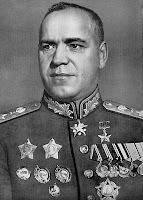
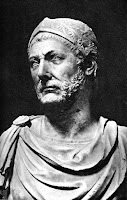

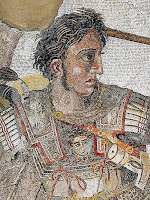

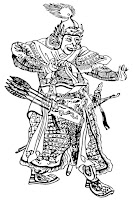

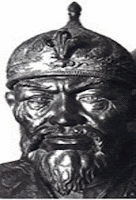
Based on Criteria, 5 major points need to be noted while being considered one of the greatest military commanders in history.
1) As Commander-in-Chief of his army, the commander should
be considered as undefeated in his long military career.
2) How much he acquired military victories particularly
those victories worth counted, which was a turning point in history.
3) How much they facilitated his empire through his military skills to expand or influence his empire towards other lands (Enemy
Territories).
4) General must be able to defeat his numerically superior forces of enemies with fewer troops and least resources, despite facing a tough environment/terrain.
5) How many great empires
were taken out or subdued by the military commanders.
In light of all those above aspects, we did both
Qualitative and Quantitative measurements upon every Military Commander, then
come to a final conclusion that who were included in the top of the list respectively.

10) Nader Shah:
Nader Shah Afshar Qoli Baig (1688-1747 AD) was one of the
most powerful kings of Persia (1736-1747). He was a military genius as it was proved through his several campaigns throughout the Middle East, Caucasus, Central Asia, and South
Asia. He is sometimes called by historians as Alexander or Napoleon of
Persia because of his excellent generalship and vast conquest. His famous
battles were Herat, Mihmandust, Murche-Khort, Kirkuk, Yeghevard, Khyber Pass,
Karnal and Kar which show his tactical and strategic marvels. He
modeled Timur and Genghis Khan and invoked their legacies into his conquest.
He was assassinated in 1747 AD.

9) Gustavus Adolphus:
Gustavus Adolphus the Great (1594-1632 AD) was the king of
Sweden; made Sweden a global power. He led Swedish supremacy during thirty
years of war in which Sweden rise as a dominant power in Europe. He is often
regarded as one of the greatest military commanders of all time, with
innovative use of combined arms. His most notable victory would occur in the
Battle of Breitenfeld (1631). Almost all military scholars agreed that he was an extremely
able military commander in history. His innovative tactical integration
of infantry, cavalry, logistics, particularly the use of artillery, earns him the
title "Father of Modern Warfare". His advancement in military science
made Sweden the dominant Baltic power for the next one hundred years. Both
Napoleon Bonaparte and Carl Von Clausewitz regarded him as one of the greatest
generals of all time. He was killed in the Battle
of Lutzen (November 6, 1632).

8) Georgy Zhukov:
Georgy Konstantinovich Zhukov (1896-1974
AD) was a Soviet general and marshal of the Soviet Union. Under his command
Soviets gain the most decisive victories during World War II. Born into a poor
peasant family from Central Russia, Zhukov was conscripted into the Imperial
Russian Army and fought in World War I. Afterward, he served in the Red Army
during the Russian Civil War. In 1939, he won a decisive battle against the Japanese
forces at Khalkhin Gol, for which he won the first of his four Hero of the
Soviet Union awards. Especially under his command, the Soviets won a victory at
the Battle of Stalingrad which is generally considered as a turning point in the history of World War II. He also defeated the Germans at the Battle
of Berlin (1945) and ended the war in Europe. He died from a stroke on June 18, 1974.

7) Hannibal Barca:
Hannibal Barca (247-183 BC), Carthaginian general who is
widely considered as one of the greatest military commanders in history. After the
defeat of his father, Hamilcar Barca in the First Punic War (264-241 BC), the
Hannibal Barca pledge to his father that never to be a friend of Rome. The
Second Punic War broke out in 218 BC after the Hannibal attack on Hispaniola (Spain).
From that point, he made his famous military feat in history by carried war
elephants to Italy as he crossed the Alps. Just in a few years, he won several
victories over Rome. Hannibal Barca could distinguish his
enemy's strengths and weaknesses and plans accordingly. His well-planned
strategies allow him to conquer several allied Italian cities and established
his rule over southern Italy for 15 years. But he unable to take Rome as Fabius
Maximus avoided confrontation with him; instead, he was waging a war of
attrition. On the other hand, the counter-invasion of Scipio Africanus forced
him to return to Carthage and finally defeated at the Battle of Zama. Theodore
Ayrault Dodge, an American military historian regarded him as “Father of
Strategy”. Romans adopted many of his military tactics. The most brilliant part
of his military career was despite his least resources and inexperience troops
he still capable enough to defeat the numerically superior forces of the Roman
Republic and became a terror of Rome. He died in 184 BC.

6) Napoleon Bonaparte:
Napoleon Bonaparte (1769-1821) was a leader of the First French Empire who rose to power during the French Revolution and led successful campaigns during the French Revolutionary Wars. Napoleon dominated
continental Europe for more than a decade and greatly influenced global
affairs during the Napoleonic Wars. He won most of his wars and the majority of his
battles, building a large empire in Europe before its final collapse in 1815.
Battle of Pyramids (1798), Battle of Marengo (1800), Battle of Austerlitz
(1805), Battle of Jena-Auerstadt (1806), Battle of Borodino (1812) was
undoubtedly one of the great victories of Napoleon and made him one of the
greatest military commanders in history. He died in 1821 AD.

5) Alexander the Great:
Alexander III of
Macedon (356 BC – 323 BC), famously known as
Alexander the Great, a member of the Argead dynasty and king of the ancient
kingdom of Macedon. He was born in Pella in 356 BC and succeeded his father
Philip II at the age of 20. He ruled for 13 years and
created one of the largest ancient empires in history stretching from Greece to northwestern India. He is widely considered as an undefeated military commander. In 334 BC, he invaded the Persian Empire (Achaemenids) and began a
series of military campaigns that lasted for 10 years and ended up with
complete conquest. Finally, he collided with the Indians at the battle of Hydaspes. After a titanic
struggle between Alexander and Porus, Alexander emerged victorious (According to the Greek Historians). After years of war, the Greek army
completely exhausted and demanded from Alexander to stop his advancement, the possibility of facing a more terrible and dangerous enemy in northern India (Nanda
Empire of Magadha). His six most famous battles in history (Chaeronea in 338, Granicus in 334, Issus in 333,
Gaugamela in 331, the Persian Gates in 330, and Hydaspes in 326) are a testimony to his magnificent strategies and
military tactics. He died in 323 BC possibly from poison.

4) Alexander Suvorov:
Alexander Suvorov (1730-1800 AD) was a Russian military commander and its national hero. He joined the Imperial Russian Czar Army at the age of 17. In his long military career of five decades he fought Seven Years War, War of the Bar confederation, First Russo-Turkish War, Kuban-Nogai Uprising, Second Russo-Turkish War, Kosciuszko Uprising, War of the Second Coalition in which he emerged undefeated in all of his wars. Due to his exceptional combat skills and leadership, he defeated his superior enemy forces. Suvorov won 63 major battles and never lost a single one while he was seriously wounded six times during his military career. Suvorov utilized aimed fire instead of repeated barrages from line infantry and applied light infantrymen as skirmishers and sharpshooters. He used a variety of army sizes and types of formations against different foes: squares against the Turks, lines against the Poles, and columns against the French. His guiding principle was to detect the weakest point of opponents and focus a devastating attack upon that area. He sends his units in small groups as they arrived on the battlefield to sustain momentum. In most cases, Suvorov was always located in the most exposed position on the battlefield because he wanted to share the same risks and discomforts as the others. He even defeated the French army of Napoleon Bonaparte during his Italian campaign in 1799-1800 and recovered all of his lands which had previously captured by Napoleon and defeated their top generals (Moreau at Cassano d’Adda, MacDonald at Trebbia and Joubert at Novi). He died in Saint Petersburg, Russian Empire (1800 AD) from illness.

3) Subutai:
Subutai
(1175-1248 AD), the most famous general of Genghis Khan, founder of the Mongol
Empire. Under his command, Mongol hordes overran or conquered Northern China
(1207, 1209, 1211-1215, 1226-1227, 1231-1235), Kazakhstan (1217-1220 AD), Eastern and Central Europe (1236-1240, 1241-1242 AD), defeating 32 nations and won all his 65 pitched battles in
a manner of more than 20 campaigns and remained undefeated in all battles. He gained victory by employing imaginative and sophisticated
strategies and routinely coordinated movements of armies that were hundreds of
kilometers away from each other. During his invasion of China,
Russia and Europe, Subutai routinely coordinated armies of 100,000 men across
frontages separated by 500-1000 kilometers and divided into three to five individual
groups. These maneuvers were highly synchronized despite the huge distances. Subutai died in 1248 AD around
Tuul River, Mongolia.

2) Khalid bin Al-Waleed:
Khalid bin Al-Waleed (592-642 AD), known as Sword of Allah,
was a companion of the Islamic prophet Muhammad (صلى الله عليه و سلم). Under
his military command, Muslims conquered the entire Arabian Peninsula and united
under a single political entity called Rashidun Caliphate. He expanded the
Rashidun Caliphate to embrace much of Mesopotamia and Levant. Furthermore, he remained
undefeated in more than 100 battles against numerically superior and well-equipped forces of
Byzantine Roman Empire and Sassanian Persian Empire, even in Ridda Wars against
Arab tribes on Arabian Peninsula.
After Hannibal Barca, Khalid bin Al-Waleed was the first-ever military commander who perfectly executed the pincer movement against a large army. In entire military history, Khalid bin Al-Waleed was the only general who consecutively defeated two superpowers at a single military engagement (Battle of Firaz, 634 AD). He is also remembered for his decisive victories at Yammah, Ullais, Firaz, and his tactical marvels, at the Wajala and Yarmouk. He is no doubt one of the finest military commanders of all time. Khalid died in Homs, Syria in 642 AD.
After Hannibal Barca, Khalid bin Al-Waleed was the first-ever military commander who perfectly executed the pincer movement against a large army. In entire military history, Khalid bin Al-Waleed was the only general who consecutively defeated two superpowers at a single military engagement (Battle of Firaz, 634 AD). He is also remembered for his decisive victories at Yammah, Ullais, Firaz, and his tactical marvels, at the Wajala and Yarmouk. He is no doubt one of the finest military commanders of all time. Khalid died in Homs, Syria in 642 AD.

1) Timur the Great:
Timur the Great (1336-1405 AD), known in the West as
Tamerlane (also spelled as Taimur), founder of the Timurid Empire and Timurid dynasty in Central Asia. Born in Kesh, 50 miles south of Samarkand, modern-day
Uzbekistan. Timur remained undefeated in his entire military career that
spanned 41/2 decades (1360-1405 AD) despite facing constant wars, in which he fought at least two hundred battles and conquered most of the Asia and Eastern Europe. Even above all of
these accomplishments, Timur and his army defeated and subdued all of his
rivals in the world except the Ming Empire of China because Timur died from fever while he was
on his way to complete his final task. Timur forged the greatest and largest empire ever created in the life of one man. From the lacerating cold weathers of the Siberian regions to the hottest regions of India and from the scorching heat of the deserts of Iraq to the notorious mountains of the Hindu Kush (Afghanistan) and Caucasus regions, no matter what circumstances, Timur remained unstoppable. Siege of Balkh (1370), Siege of Urganj (1380), Siege of Tbilisi (1386), Battle of Kondurcha River (1390), Battle of Terek River (1395), Battle of Delhi (1398), Siege of Aleppo and Damascus (1400), Battle of Ankara (1402) and Siege of Smyrna & Birtvisi (1403) were the signs
of his strategic and tactical victories. He died on 17th February 1405 at Otrar in Kazakhstan while he was the mightiest ruler of half of the known world.
Feel free to ask any questions concerning list, i will give you my appropriate answers as best as i can...
ReplyDelete